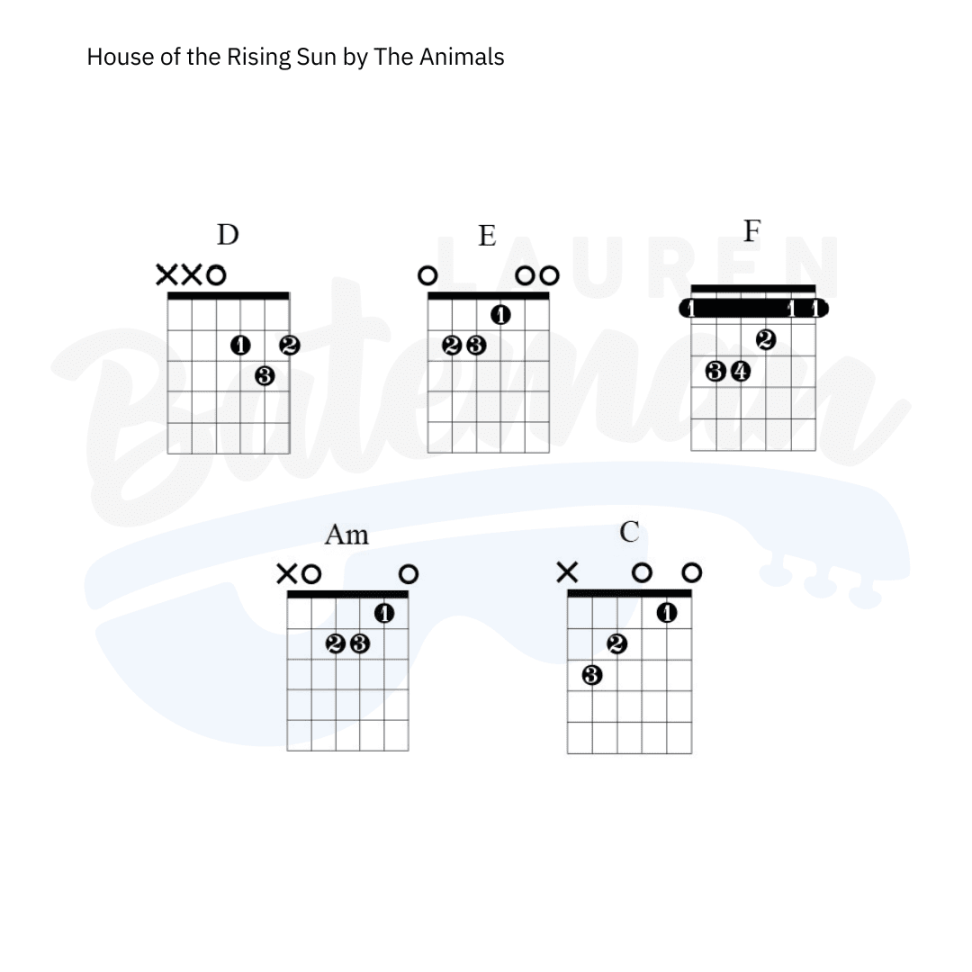Guitar Chord Progressions in House Music: Beyond the Four-to-the-Floor
House music, with its hypnotic rhythms and soulful vibes, often relies on compelling chord progressions to create its signature atmosphere. While the iconic four-to-the-floor beat lays the foundation, it’s the harmony that truly elevates a track. For guitarists looking to add a live, organic touch to their house productions, understanding these progressions is key. Let’s dive into some essential concepts and practical examples.
The Classic House Chord Palette
House music often draws from a rich palette of chords, rooted in jazz and soul. Major sevenths, minor sevenths, and dominant sevenths are frequent visitors, adding depth and sophistication. Think of the warm, lush sound of a major seventh chord, or the melancholic beauty of a minor seventh. These chords, when arranged in clever progressions, can evoke a range of emotions, from uplifting euphoria to introspective contemplation.
Understanding the I-IV-V Progression (and Variations)
The I-IV-V progression, a staple in countless genres, also finds its place in house. However, in house, it’s often flavored with those jazzy sevenths we mentioned earlier. For instance, in the key of C major, instead of simply C-F-G, you might hear Cmaj7-Fmaj7-G7. This subtle shift adds harmonic richness and complexity.
The Minor Key Magic

Don’t shy away from minor keys! They can add a touch of mystery and intrigue to your house tracks. A common progression in a minor key is i-iv-v (or i-iv-V). For example, in A minor, you could use Am7-Dm7-E7. The minor key often lends itself to deeper, more atmospheric house productions.
Adding Passing Chords and Extensions
To make your progressions even more interesting, consider adding passing chords. These are chords that briefly connect two main chords, creating a smoother transition. For instance, between a Cmaj7 and an Fmaj7, you might insert a Dm7. Also, explore chord extensions like 9ths, 11ths, and 13ths. These extensions add color and harmonic complexity, making your progressions sound more sophisticated. For example, replacing a simple G7 with a G9 or G13.
The Power of Chord Inversions
Inversions are your friends! They allow you to manipulate the bass note of a chord, creating smoother voice leading and adding melodic interest. For instance, instead of playing a Cmaj7 in root position (C-E-G-B), you could play it in first inversion (E-G-B-C), second inversion (G-B-C-E), or third inversion (B-C-E-G). Experiment with inversions to find the smoothest transitions between chords.
Using Suspended Chords for Tension and Release
Suspended chords (sus2 and sus4) are excellent for creating tension and release. A sus4 chord, for example, creates a sense of anticipation that resolves beautifully to the major or minor chord. Try incorporating sus chords into your progressions to add dynamic variation.
The Role of Rhythm and Voicing
It’s not just about the chords themselves, but also how you play them. Rhythm and voicing are crucial elements. Try experimenting with different strumming patterns, arpeggios, and chord voicings to find a sound that fits your track. Consider how you spread the notes across the guitar neck, creating a wide or narrow voicing to manipulate the texture of your harmonic elements.
Practical Examples and Applications
Let’s look at some practical examples. A progression like Am7-D7-Gmaj7-Cmaj7 is a classic house staple. Or try Em7-Am7-D7-Gmaj7 for a more melancholic vibe. You can adapt these progressions to different keys and tempos, and experiment with adding passing chords and extensions.
Integrating Guitar into a House Production
When integrating guitar into a house track, consider the overall arrangement. Don’t overcrowd the mix. Let the guitar complement the other elements, rather than overpowering them. Use effects like reverb and delay to create space and depth. Experiment with different guitar tones and textures to find a sound that fits your track.
Finding Inspiration and Developing Your Own Style
Listen to a wide range of house music, paying close attention to the chord progressions. Analyze your favorite tracks and try to recreate them on your guitar. Don’t be afraid to experiment and develop your own unique style. Combine elements from different genres and create something new and exciting.
Beyond the Basics: Advanced Chord Concepts
For those looking to go further, explore concepts like modal interchange, secondary dominants, and tritone substitutions. These advanced techniques can add even more depth and sophistication to your progressions. Remember, practice is key. The more you play, the more comfortable you’ll become with these concepts.
Conclusion
Guitar chord progressions are a powerful tool for adding depth and soul to house music. By understanding the classic chord palette, experimenting with inversions and extensions, and paying attention to rhythm and voicing, you can create compelling progressions that elevate your productions. Don’t be afraid to experiment and develop your own unique style. Listen to a wide range of house music, analyze your favorite tracks, and practice regularly. With dedication and creativity, you can harness the power of guitar chords to create house music that resonates with listeners on a deeper level. Remember to keep practicing and always be open to new ideas. The journey of musical discovery is never-ending, and the possibilities are limitless.

